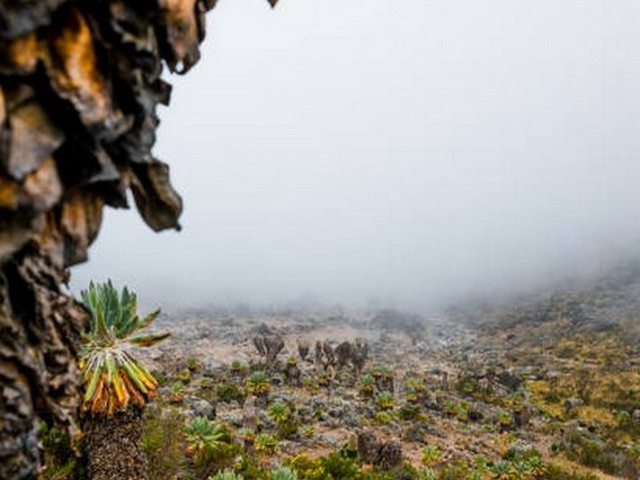The Ultimate Trekking Gear Checklist for Kilimanjaro: Reach the Roof of Africa with Confidence
Introduction: Embark on the Adventure of a Lifetime
Welcome to the journey of climbing Mount Kilimanjaro, a beacon for adventurers worldwide. Standing as a majestic giant over the Tanzanian landscape, Kilimanjaro is not just Africa’s tallest peak but also a symbol of personal achievement and natural beauty. As you prepare for this life-changing trek, the Kilimanjaro Centre for Trekking and Ecotourism (KCTE) is here to guide you, ensuring your adventure is as memorable as it is safe. In this blog post, we’ll walk you through an essential "Trekking Gear Checklist for Kilimanjaro" that will help you conquer this giant with confidence and comfort.
Why the Right Gear Matters
Climbing Kilimanjaro is no ordinary feat—it’s a multi-day journey through five unique climatic zones, ranging from rainforests to arctic conditions. The right gear not only enhances your comfort but also your chances of a successful summit. Ill-preparedness can turn an adventure into a challenge. Let’s ensure your focus stays on the breathtaking views and personal triumphs, rather than any discomfort.
Essential Trekking Gear Checklist for Kilimanjaro
H2: Clothing for All Climates
Dress in Layers
- Base Layer: Breathable, moisture-wicking materials like merino wool or synthetic fabrics keep you dry and warm.
- Insulation Layer: A fleece or down jacket provides necessary warmth in freezing temperatures.
- Outer Layer: Waterproof and windproof jackets and pants are crucial for protection against harsh winds and rain.
Accessories for Protection
- Gloves: Waterproof and insulated gloves are a must, especially towards the summit where temperatures drop.
- Hat and Neck Gaiter: A warm hat and a neck gaiter will protect you from cold wind and sun exposure.
- Thermal Socks: Wool or thermal socks prevent blisters and keep feet warm and dry.
H2: Footwear That Takes You to the Top
- Hiking Boots: Invest in high-quality, waterproof, and broken-in hiking boots to prevent blisters and provide ankle support.
- Gaiters: These help keep rocks, dirt, and snow out of your boots.
- Sandals or Comfortable Shoes: For relaxing at the camp after a day’s trek.
H2: Backpack Essentials
- Daypack: A 30-40 liter backpack will carry your daily essentials like snacks, water, and a first aid kit.
- Waterproof Cover and Bags: Protect your gear from rain and keep everything organized.
H2: Navigating and Safety Equipment
- Headlamp and Spare Batteries: Essential for early morning summit attempts and night movements.
- Trekking Poles: Reduce the impact on your knees and improve balance on uneven terrains.
- Sunglasses and Sunscreen: High UV-protection sunglasses and high-SPF sunscreen to shield you from intense sun rays.
H2: Hydration and Nutrition
- Water Bottles or Hydration System: Carrying sufficient water is crucial, aim for 3-4 liters per day.
- Water Purification Tablets: Although camps provide water, it’s safer to purify it before drinking.
H2: Health and Comfort
- First Aid Kit: Include altitude sickness medication, plasters, antiseptics, and pain relievers.
- Sleeping Bag: A four-season sleeping bag suitable for temperatures well below freezing.
- Insulated Sleeping Mat: Adds an extra layer of insulation from the cold ground.
H2: Personal Items and Extras
- Camera: Capture the stunning vistas and your summit success.
- Portable Power Bank: Keep your electronic devices charged.
- Snacks: Energy bars, dried fruit, nuts, and chocolate to keep your energy up.
Preparing for Your Kilimanjaro Adventure with KCTE
Kilimanjaro Centre for Trekking and Ecotourism (KCTE) believes that preparation is the key to making your Kilimanjaro trek a joyous and successful expedition. Our expert guides accompany you, equipped with local knowledge and technical expertise. We ensure that you’re not just ready physically but also mentally for the climb.
Why Choose KCTE?
Booking your climb with KCTE means choosing a partner who values your safety and experience above all. We offer tailor-made packages that cater to different fitness levels and preferences, complete with high-quality rental gear if you’re not keen on buying new equipment. Our sustainable and eco-friendly practices ensure that we preserve the beauty of Kilimanjaro for future generations.
Conclusion: Start Your Summit Story with Us
Preparing the right gear is the first step toward a successful Kilimanjaro climb. With “Trekking Gear Checklist for Kilimanjaro” in your hand and KCTE by your side, you’re all set to conquer the roof of Africa. Embrace the challenge, enjoy the journey, and etch your own unique story in the clouds above Kilimanjaro.
Are you ready to start your summit story? Contact us today to book your Kilimanjaro adventure with the best in the field!
Frequently Asked Questions (FAQ)
What is the best time of year to climb Kilimanjaro?
The best times to climb Kilimanjaro are during the dry seasons, from late June to October and from late December to early March.
How fit do I need to be to climb Kilimanjaro?
While you don’t need to be an athlete, a good level of fitness will significantly enhance your experience and success rate. We recommend starting a fitness regime at least 3-6 months before your climb.
Can I rent trekking gear in Tanzania?
Yes, KCTE offers high-quality rental options for major trekking gear, including sleeping bags, boots, and jackets, to help lighten your load.
Embrace the climb, and let Kilimanjaro transform you, step by step, breath by breath. With KCTE, you’re not just climbing a mountain; you’re reaching new heights in life’s grand adventure.




